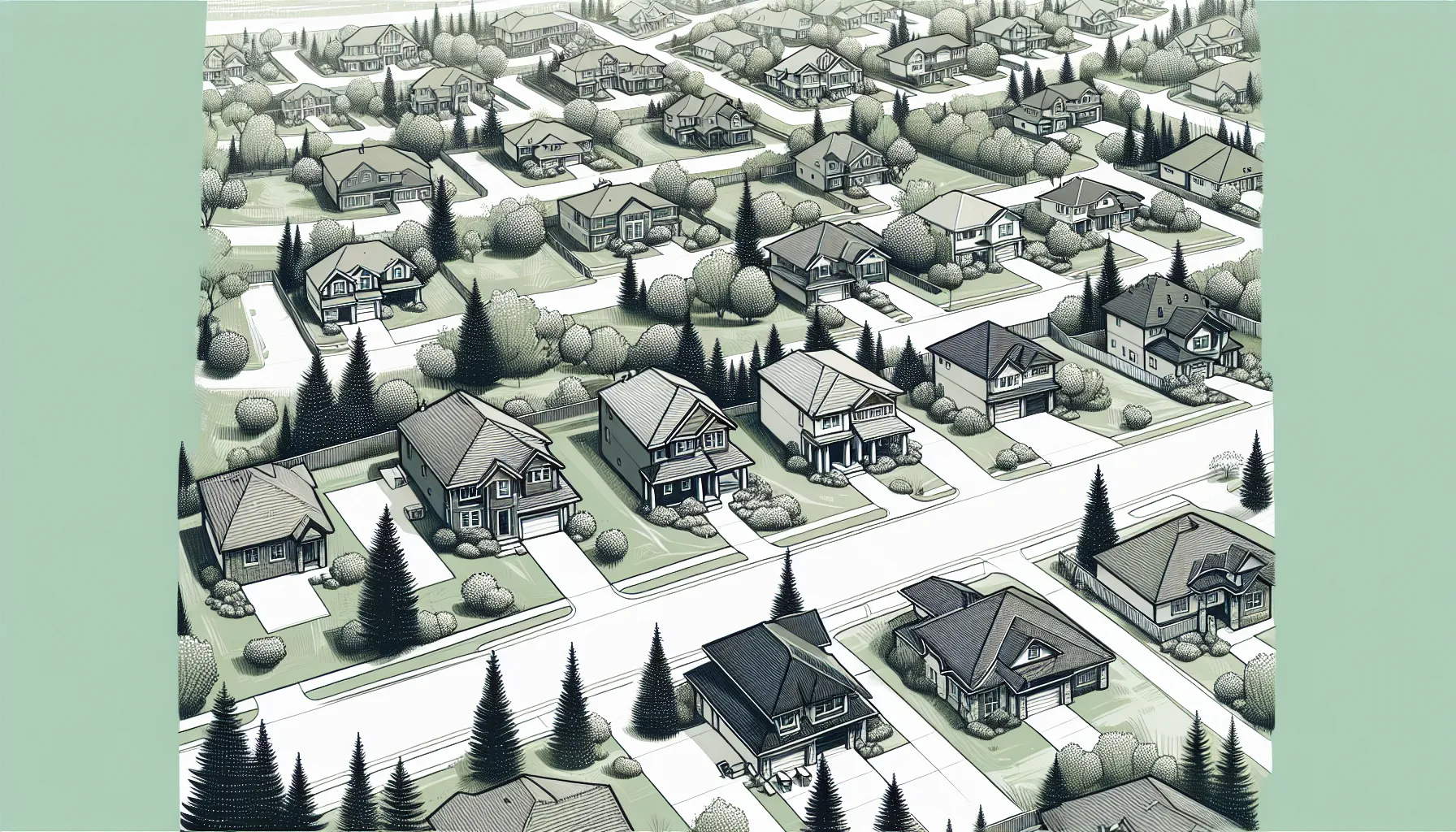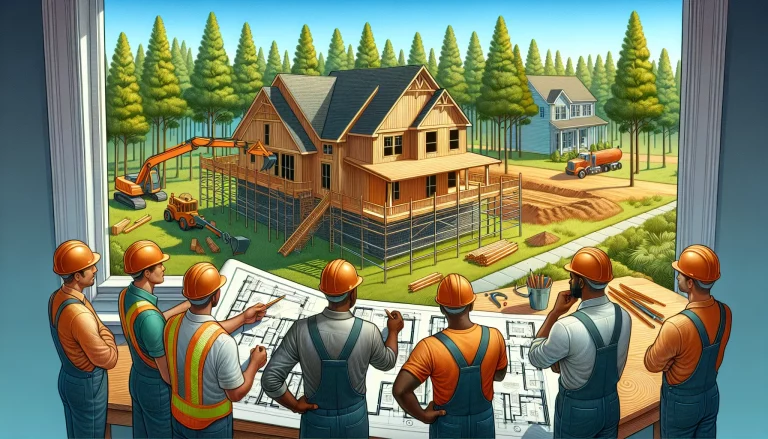Key Takeaways
- Average Annual Increase: Home values have appreciated at an average annual rate of about 4% since 1991, showcasing resilience in the housing market despite economic fluctuations.
- Influencing Factors: Key factors affecting home values include location, economic conditions, housing supply, and property improvements, all of which should guide investment decisions.
- Regional Variations: Regional differences significantly impact home value increases, with some areas, like California and Florida, experiencing higher growth rates due to high demand, while others may see more modest gains.
- Economic Indicators: Future home value increases are influenced by economic indicators such as GDP growth, unemployment rates, and interest rates, which affect buyer confidence and demand.
- Implications for Buyers: For home buyers, rising values suggest the potential for significant equity growth, making it crucial to evaluate market conditions and neighborhood trends before making a purchase.
- Opportunities for Sellers: Home sellers can capitalize on rising values to maximize their return on investment, but must carefully consider pricing strategies and local market dynamics to ensure successful sales.
Navigating the real estate market can feel overwhelming, especially when we’re trying to understand home value trends. One question that often comes up is: what’s the average home value increase per year? Knowing this can help us make informed decisions about buying or selling our homes.
Over the years, home values have shown a steady upward trajectory, influenced by various factors like location, economic conditions, and market demand. By examining historical data and current trends, we can gain valuable insights into how much we might expect our homes to appreciate. In this article, we’ll explore the average annual increase in home values, helping us all understand the dynamics of our investment in real estate.
Understanding Home Value Increases
Home value increases result from various dynamic factors that impact real estate. It’s crucial for us to recognize these drivers as they shape investment decisions and influence market strategies. We’ll explore the key elements influencing property values and examine significant historical trends to provide a clearer picture of how home values evolve.
Factors Influencing Home Value
Home values are influenced by multiple factors that should guide our understanding and actions. Location significantly affects property demand and value; homes in desirable neighborhoods typically command higher prices. Economic conditions, such as job growth and interest rates, also play essential roles; higher employment levels increase buyer confidence, which positively affects home prices. Additionally, housing supply impacts values—when demand outpaces supply, prices tend to rise. We should also consider property improvements; renovations enhance a home’s value, demonstrating the importance of investment in maintenance and upgrades.
Historical Trends in Home Values
Analyzing historical trends reveals how home values have shifted over the years. According to the Federal Housing Finance Agency (FHFA), home prices have steadily appreciated at an average annual rate of about 4% since 1991. Economic downturns, such as the 2008 financial crisis, temporarily disrupted this trend, leading to significant declines in home values. However, recovery patterns showcased resilience, with values rebounding rapidly due to low supply and increased demand in many markets. Observing these historical dynamics assists us in forecasting potential future trends and making informed decisions regarding property purchases or sales.
Current Average Home Value Increases

Understanding average home value increases provides valuable insights into the real estate market. Current trends reveal how property investment can yield financial growth over time.
National Averages
Nationally, home values have appreciated at an average annual rate of about 4% since 1991. This statistic illustrates the resilience of the housing market even amid economic fluctuations. For instance, the Federal Housing Finance Agency (FHFA) reported that home prices increased approximately 9% year-over-year in 2021, reflecting strong demand. As we move into 2023, the average home price stands around $329,000, marking a significant rise from previous years. These averages aid in estimating property investments and understanding overall market health.
Regional Variations
Regional variations in home value increases are noteworthy and can significantly impact real estate investments. For example, states like California and New York often experience higher-than-average growth rates due to large urban centers and high demand. Conversely, areas with lower demand, such as parts of the Midwest, may see more modest increases, averaging around 2% annually. According to Zillow, markets in Florida reported increases of over 10% in some regions, driven by migration trends and job growth. As we analyze these regional differences, we recognize that localized factors play a crucial role in determining property appreciation, necessitating regional market awareness when considering home investments.
Projections for Future Home Value Increases
We anticipate several factors that will influence future home value increases. Understanding these economic indicators can provide valuable insights for homeowners and investors alike.
Economic Indicators
Economic indicators play a crucial role in predicting future home value changes. The gross domestic product (GDP), unemployment rates, and consumer confidence levels offer a snapshot of economic health. When GDP grows consistently, it generally correlates with stronger housing demand and, subsequently, rising home values. We see unemployment rates also impact buyer activity; lower unemployment typically fosters buyer confidence, leading to increased home purchases. Furthermore, changes in interest rates significantly sway the housing market. When rates decrease, borrowing becomes more affordable, spurring potential buyers to enter the market, which can drive values up.
Expert Predictions
Expert predictions provide valuable insights into the real estate landscape. Numerous analysts forecast home prices will appreciate, but at varying rates depending on regional markets. For instance, the National Association of Realtors projects an average increase of 5% over the next year, while areas with booming job markets may see even higher gains. Conversely, markets with stagnant economic growth might exhibit more modest increases. We rely on data compiled from various sources, including historical trends and current market conditions, to form these predictions. Monitoring these patterns enables us to guide clients in making informed decisions in this evolving environment.
Implications of Home Value Increases

Understanding the implications of home value increases is vital for both buyers and sellers in today’s real estate market. Increased home values impact financial decisions, investment opportunities, and long-term planning. As we explore these implications, we can gain a clearer perspective on how appreciating property values can influence our choices.
For Home Buyers
For home buyers, rising home values indicate that purchasing a property now could lead to significant equity growth in the future. An increase in home values often reflects demand, suggesting that investing in a desirable location may bring long-term benefits. Buyers should evaluate the risks and benefits of buying in a fluctuating market; while a robust market may drive prices higher, waiting too long can lead to missed opportunities. Budgeting becomes essential; monthly payments might rise with increasing home prices and interest rates. We must also consider neighborhood trends, as local developments can impact property values. Evaluating these factors helps in making strategic purchasing decisions that align with individual financial goals.
For Home Sellers
For home sellers, an appreciation in home values presents opportunities for profitable listings. Higher home values can translate into increased sale prices, allowing sellers to maximize their return on investment. As the market strengthens, pricing strategies should reflect current trends while considering the unique characteristics of our properties. Sellers should highlight upgrades and improvements to attract potential buyers, enhancing perceived value. However, we must be cautious; overpricing can deter buyers, even in a favorable market. Understanding local market dynamics can help in timing the sale effectively. In a landscape where values fluctuate, we must remain adaptable, ensuring that our selling strategies align with market realities to achieve a successful sale.
Conclusion
Understanding the average home value increase per year is vital for anyone looking to navigate the real estate market. It empowers us to make informed decisions whether we’re buying or selling. With home values historically appreciating around 4% annually and current trends showing resilience, we can feel more confident in our investment choices.
As we monitor economic indicators and regional variations, we can better anticipate future changes in the market. Staying informed helps us recognize opportunities and challenges, ensuring we’re prepared to act wisely in this evolving landscape. By keeping a close eye on these trends, we can maximize our real estate investments and secure our financial future.
Frequently Asked Questions
What influences home value trends?
Home values are influenced by several factors, including location, economic conditions, housing supply, and property improvements. Desirable neighborhoods often see higher prices, while job growth and interest rates also impact buyer confidence and prices.
What is the average annual increase in home values?
Historically, home prices have appreciated at an average annual rate of about 4% since 1991. Despite occasional downturns, like during the 2008 financial crisis, this trend showcases the long-term resilience of the housing market.
How do regional variations affect home values?
Regional variations can significantly impact home value increases. States with high urban demand, such as California and New York, often experience greater price growth, while more modest increases may occur in areas like the Midwest.
What economic indicators affect future home values?
Key economic indicators influencing home values include GDP growth, unemployment rates, and consumer confidence. For example, consistent GDP growth typically leads to stronger housing demand, while lower unemployment boosts buyer confidence.
How should buyers and sellers respond to rising home values?
Buyers should evaluate market conditions and budget effectively to capitalize on potential equity growth. Sellers, on the other hand, can profit from appreciating values but must price strategically to remain attractive to potential buyers.






